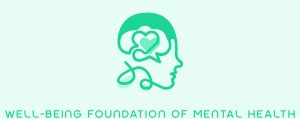DOMESTIC (OR FAMILY) ABUSE: THE PROBLEM An 18-month-old child was brought to the hospital No child should have to suffer violence in his or her home. A childs The World Health Organization (WHO) breaks domestic abuse down into 1. Physical abuse: That which results in actual or potential 2. Sexual abuse: The involvement of a child in sexual activity This may include, but not is limited to:
There is no such thing as a typical sex abuser. The majority, however,
3. Neglect: The inattention or omission on the part of the 4. Emotional abuse: Failure to provide a developmentally Domestic abuse is prevalent and can cause physical injury as well
COMMUNITY VIOLENCE: THE PROBLEM I worry about my kids being molested, my house Community violence refers to exposure, as a witness or through actual Results of a UNICEF survey in Europe and Central Asia stated that Sadly, most urban American children, by the time they enter high In fact, some studies cited by Future of the Children In addition, about 4 million adolescents have been victims of serious A UNICEF survey in the Western Pacific region stated that about 1,000 DEVELOPMENTAL IMPACT OF DOMESTIC ABUSE AND COMMUNITY VIOLENCE The spectrum of abuses faced by children in the family or community Research has demonstrated repeatedly that the impact of domestic Even infants and toddlers are gravely affected. Studies Witnessing violence has a detrimental effect on a childs perspective Children who are victims of domestic violence are more likely Sexual abuse of children places them at greater risk of later Abuse and violence produce aggressive children and eventually Victims of domestic and community violence are more likely DOMESTIC ABUSE AND COMMUNITY VIOLENCE: STRATEGIES Many now are recognizing that a supportive and confiding relationship Research strongly suggests that domestic abuse Some research, pilots programs and models are described A National (Australian) Audit of Child Abuse The Institute also is urging a change of focus 1. Safety and protection 2. Empowerment and 3. Responsibility The Institute further suggests those child protective The Child Witness to Violence Project at The Child Trauma Research Project at San Partnerships Against Domestic Violence: Endorsed
The United Nations states within its report, We
|
||
(Last Updated On: )
